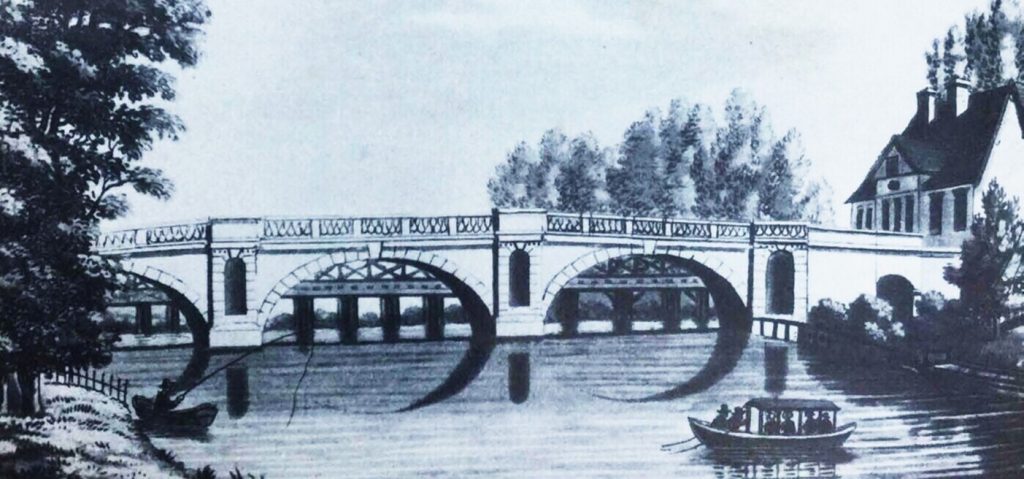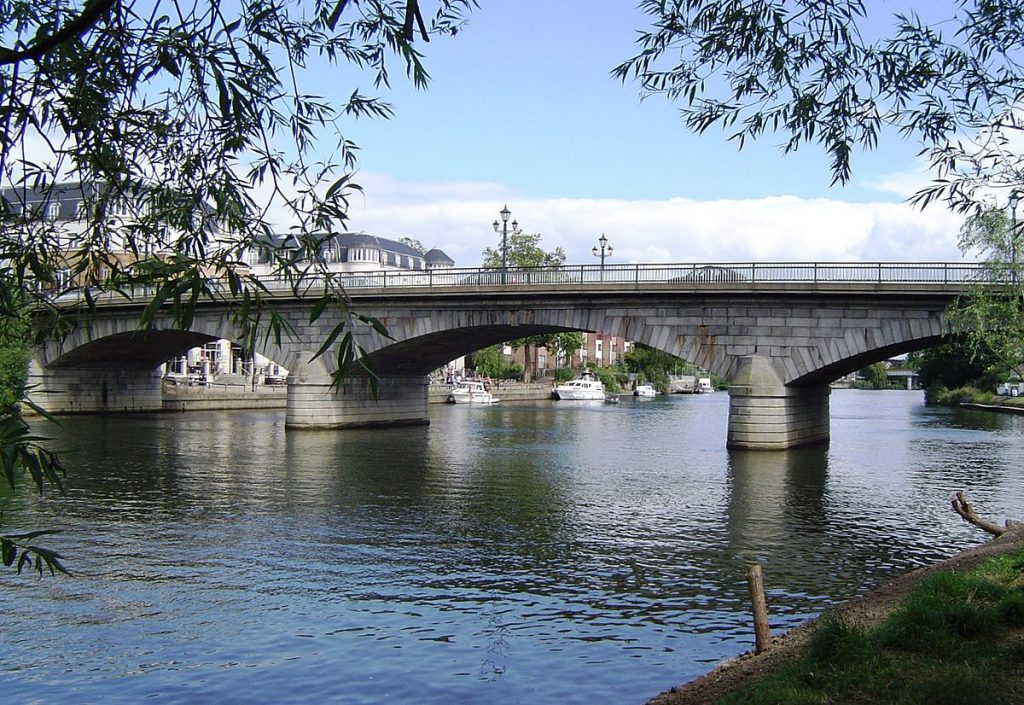
The first bridge across the Thames at this point was built by the Romans in the middle of the first century AD. It is believed to have been the only bridge across the Thames at the time apart from one in London.
It was a critical transit point in what became known as the ‘Devil’s Highway’. A small town developed at the bridgehead,
then called Pontes (or ‘bridge’) and today called Staines-upon-Thames.
Several bridges were built in subsequent centuries over the river within fifty metres from the existing bridge. A sturdy wooden bridge built in the 13 th century is thought to have survived in use, with frequent repairs, until the 17 th century. The continuing importance of Staines during this period is reflected in Shakespeare’s ‘King Henry V’ in which Hostess Quickly, telling her husband that she wants to accompany him to Southampton, says to him “Prithee, honey-sweet husband, let me bring thee to Staines”.
For what purpose is not clear!
A new wooden bridge was built to replace the earlier one and this in turn was replaced in the 1790s by a stone bridge designed by Thomas Sandby. He was a war artist and architect who was also private secretary to the Duke of Cumberland and became a personal friend of King George III.
However, this transition from wood to stone was not entirely successful! Although parts of this bridge remain in evidence today in the Egham Hythe Conservation Area, together with what was the toll house to collect dues from those crossing it, its foundations began to collapse
within just a few years.

Nor was its cast iron replacement much more successful. It soon began to crack and was finally replaced in 1832 by the current granite bridge designed by engineer brothers George and John Rennie. Because this was an important crossing of the Thames, a temporary second bridge was built nearby during the Second World War as an insurance against bomb damage. After the war this was used for a while as a pedestrian crossing. The current bridge was widened in 1958 to accommodate pedestrian walkways.
